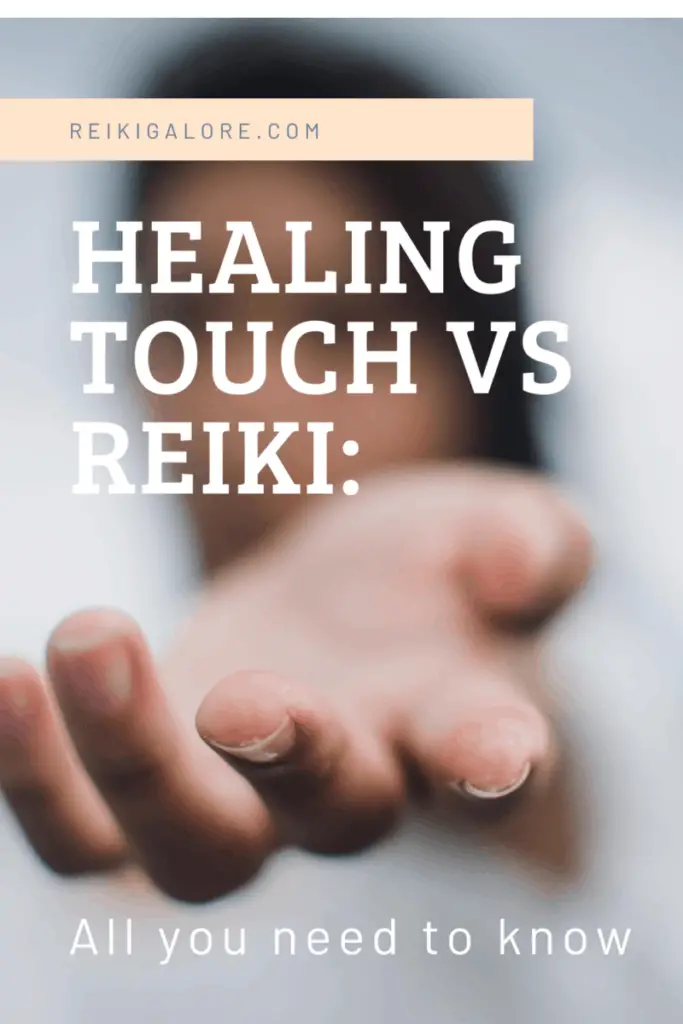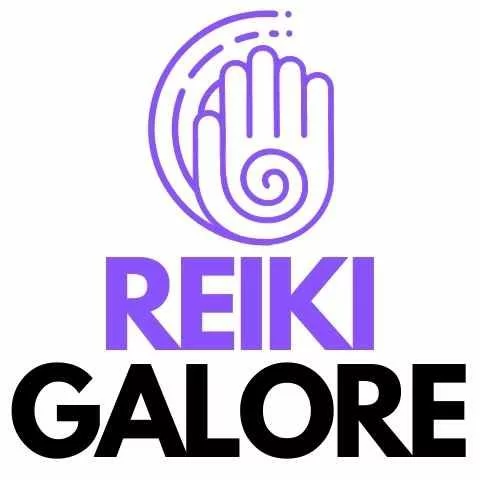I bet you heard at least once in your lifetime of spiritual ways to help cure diseases and improve overall wellbeing.

If you’re interested in this topic, here you’ll find a Healing Touch vs Reiki overview that will tell you everything you need to know about these unconventional methods.
To begin with, both Healing Touch and Reiki are types of alternative medicine based on energetic techniques performed by trained practitioners that use light or “near-body” touch to facilitate the client’s self-healing.
Their goal is to restore the health of the mind, the body, and the soul of the recipient while stimulating the “universal life force energy” that flows through all of us. Let’s take a closer look at the common aspects of these two approaches.
What do Healing Touch and Reiki have in common?
- They are both known to function by encouraging your body to engage in a process of self-healing;
- The two work with the subtle energy in the body, which can majorly affect our human energy system;
- They offer holistic and complementary approaches to enhance the overall health of the physical, mental, emotional, and spiritual aspects of the human energy system;
- Both practices are based on a transfer of the universal healing energy is transferred through the practitioner to the client;
- The two approaches treat the human energy system of the biofield, chakras, and meridians.
- They are known to promote the healing of basic diseases and illnesses, reduce stress, and encourage relaxation. According to Ascent Physical Therapy and Wellness, Healing Touch and Reiki can help decrease anxiety, tension, and stress, alleviate pain, aid wound healing, improve spiritual development, get ready for, and recover from medical treatments, surgeries, and procedures, handle and lessen the side effects of treatments, and support cancer care;
- Both Healing Touch and Reiki are used broadly in private practices and integrative healthcare. They can complement conventional health and play an important role in nursing. Some allied healthcare professionals that might use these approaches are physical and occupational therapists, counselors, physicians, social workers, and massage therapists;
- These two alternative medicine methods can be learned and performed by anyone willing to follow the appropriate training;
- They require a sacred space and centering or grounding practices that enable the energy to flow through the body;
- None of the methods use any kind of manipulation, so there can be no harm done;
- The sensations that you might experience are feelings of warmth or tingling. Some clients report they did not feel any physical sensation at all. But this does not mean the treatment does not work!
- They are both believed to work even without other medical interventions;
- The client only receives the amount of energy force he or she needs.
Where do they come from?
According to the Healing Touch Program, the Healing Touch method is a collection of energy healing techniques grounded in the practice invented and performed by Janet Mentgen and other famous energy healing pioneers.
Concerning the practice of Reiki, we know that it was created by a Buddhist Monk named Mikao Usui in Japan in 1922.
Read : best crystals for healing.
The Buddhist master taught this practice to over 2000 students before his death. According to a paper written by the Healing Touch NJ, the word Reiki means “God Light Energy” in Japanese.
In the first part of the word, “Rei” describes the infinite aspect of this energy, whereas the word “ki” represents the life force present in all living things.
Healing Touch VS. Reiki: Main Differences

Even if the two practices are very similar, there are a few fundamental differences that should not be overlooked, especially if you’re on the search for the best alternative medicine treatment for you! So let’s learn about what pulls these traditions apart:
| Healing Touch: | Reiki: |
| All people are able to transfer the universal healing energy simply by using their intention; | You can only treat others once you have received the appropriate attunement by a Reiki master; |
| Practitioners have to evaluate the client’s energy system and make use of patterned techniques in order to deliver the right results; | Practitioners work with sacred symbols during the healing process; |
| The treatment sessions follow a standard 10 sequence based on nursing practice with a focus on the case management; | The Reiki practitioners can choose the Reiki symbols; |
| Before and after the treatment, practitioners check the client’s energy; | The energy assessment is not necessary and practitioners can choose to perform it or not; |
| The healer will place his or her hands above the body, lightly on the body, or both; | There is a series of hands positions that can be used by the practitioners on the body or above it, from head to toe; |
| There is a standardized curriculum for this practice that has been developed in the 1980s by Janet Mentgen and consists of five sequence-based training levels with over 100 training hours. At the end of the program, the practitioner can receive a certification, and his development can be supported by the Healing Touch Professional Association. | The systems used for Reiki training are diverse and their history dates back to the ones created by Mikao Usui and other Reiki Masters. Usually, the preparation takes place in 4 levels, but it is not standardized, so the Reiki Master has a major influence on the particular structure and content taught in specific training. However, you can still receive certain certifications as a Reiki practitioner. |
| According to the Healing Touch Program, their curriculum is accredited by the American Nurses Credential Center and endorsed by the American Holistic Nurses Association. | The same website states that Reiki practice does not hold any standardized Code of Ethics or Standards of Practice for practitioners and approval to practice is not standardized, governed, or monitored. |
What is the science behind Healing Touch and Reiki?
Healing Touch
A great deal of research has been done and is being done around the practice of Healing Touch, many of which were published in numerous journals that are exploring the discoveries in this field.
Some of the studies conducted have been supported by internationally recognized funding bodies such as the National Institute of Health.
The research in this field is generally looking at the impact of Healing Touch Therapy on a wide variety of disease conditions and symptoms.
The Healing Touch Research Website recommends a few studies that support the practice of Healing Touch and meet most of the criteria for trustworthy research.
- Brain, Behavior, and Immunity, Preservation of immune function in cervical cancer patients during chemoradiation using a novel integrative approach, conducted in 2010 at the University of IOWA, is a study that showed a minor decrease in the killer cell in the case of HT patients, compared to the ones that did not use this approach.
- The clinical effectiveness of Healing Touch, published in The Journal of Alternative and Complementary Medicine, studied the salivary secreted immunoglobulin A, believed to be linked to health enhancement before and after treatment, self-reported stress, perception of health improvement, and questionnaires. The patients receiving HT treatment alone and together with music and guided imagery had higher levels of slgA, and experienced less stress and pain relief.
Reiki
Reiki is a modality that aims to balance the body’s energy and promote harmony within the patient’s energy field. Developed by mikao usui, Reiki practitioners use touch and channel energy through their hands to help facilitate the energy flow through the patient’s energy centers or chakras.
Unlike Healing Touch or therapeutic touch, Reiki practitioners use a specific set of principles and techniques that involve connecting with the world of energy and using gentle touch to maintain a comfortable and educational experience for the patient. Reiki attunements, which are obtained through attending a weekend class, provide practitioners with the capability to connect with the patient’s energy field and promote personal growth.
The benefits of Reiki are similar to those of Healing Touch, including stress alleviation and overall improvement in well-being. However, the difference between the two modalities lies in the focus on the patient’s body’s energy in Reiki and the use of specific principles in Reiki.
In comparison to traditional medicine, Reiki is not a replacement for medical treatment, and patients are encouraged to seek medical attention from a doctor if necessary. Nevertheless, Reiki can be an essential addition to a patient’s treatment plan, providing a gentle and comforting experience that can promote balance and harmony in their energy field.
Conclusion
It is not advised to undergo any of these treatments before a checkup with your physician.
Even though many people reported an overall improvement of wellbeing after the use of these techniques, they are not reported to be effective by themselves.
Your condition might require formal medical care and treatments along with alternative, energy-based methods.
In addition, I recommend choosing a trustable practitioner. You can check the results of former or present clients and ask questions about their experience.
Taking into consideration that these are new realms of medicine not yet backed by sufficient science to be integrated into conventional systems, many folks might try to take advantage of your money without delivering the proper care.
To avoid such unpleasant and even dangerous situation, I suggest working with accredited practitioners and institutions with great reviews from other people that following these treatments.
To conclude, whatever the treatment you choose, make sure you stay safe and undergo the necessary medical procedures for your condition alongside any energy-based techniques.



